Cool Shapes to Draw Easy
How to draw basic shapes
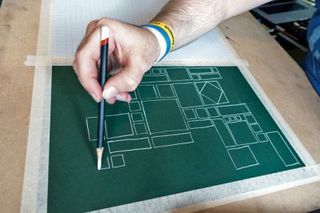
Breaking any procedure downward into pocket-size chunks is a great fashion to tackle what tin can seem like a daunting task. If yous're struggling to effigy out how to draw (opens in new tab) something complicated, breaking the discipline down into unproblematic shapes can help you brainstorm to describe its overall construction. All you need a solid grasp of how to depict a cube, cylinder and sphere, which we'll cover here.
- How to draw a face
In the opening stages of a drawing, you lot should be looking to describe your subject area and its surround in very elementary terms: ever avoid details too early.
Past drawing with simple shapes, we can focus on proportions, composition, planes and the relationships between forms. It'south all about working big down to pocket-size; simple into complex; basic shapes into crafted details.
In that location are three basic shape archetypes that any form can exist fitted into: the cube, the cylinder and the sphere. At the middle of these form shapes are 2 elementary geometric shapes: the foursquare and the ellipse.
There are three basic shape archetypes that any form tin can exist fitted into; the cube, the cylinder and the sphere
Learning to accurately draw and combine these will help you to construct whatsoever object, observed or imagined. In walking you through this procedure we will have to deal with concepts like perspective and foreshortening, so we'll take a very brief, applied look at them.
We'll outset with drawing the square, leading onto the cube – the nigh articulate shape when information technology comes to describing geometry in a drawing that has perspective.
Having six basic planar faces, the cube's proportions help to repeat their relationship inside 3D space. This aids further description of more complex rectilinear, cylindrical and curvilinear forms.
You might think that drawing elementary shapes is... well, uncomplicated. Merely don't be fooled. Information technology takes immense skill to perfect drawing freehand shapes like a elementary circumvolve.
01. How to draw a square
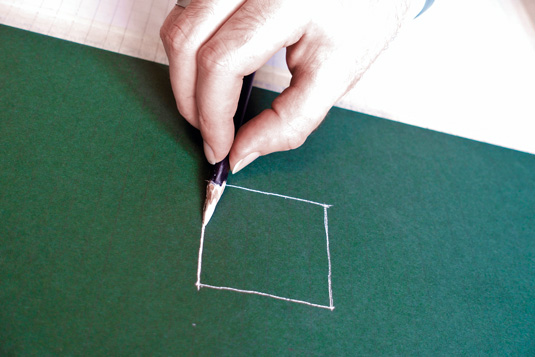
Drawing a basic square is the simple connectedness of four straight lines, 2 along the horizontal axis and two to draw the vertical axis. Drawing these lines is all about living in the future: pinpoint your start point; imagine the end point.
Place your pencil on the starting time point, relax and focus on the cease point. Pull your mark along the imagined path removing the pencil in one case information technology reaches the cease point. Pull your lines towards their goal: this uses more than adept muscle groups.
Effort this squared practise

The grip shown higher up is one we're all accustomed to using when writing. Grip using the pollex, index and middle finger. The barrel of the pencil should residual naturally in your manus's web space.
Avert closing the spider web space as this forces the butt to balance on the knuckle of the index finger and promotes strokes using finger gestures only. Avert grasping at the tip of the pencil, as this tin limit line length and atomic number 82 to less fluid lines.
02. How to draw a cube
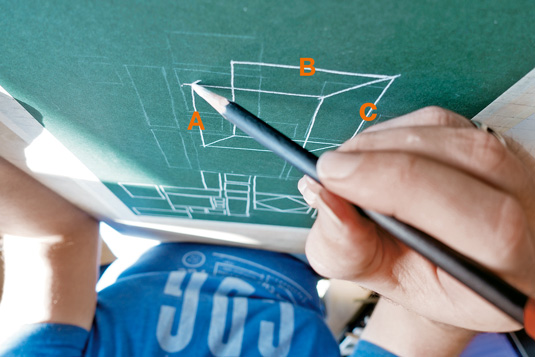
Using the unproblematic square as a starting point [A], begin to describe a box in 3D infinite. Draw another square that overlaps the first [B]. Connect all the corners of one square to the adjacent corners of the other, using 45-degree lines [C].
This process of showing all six sides of the cube is known equally 'drawing through', and here it highlights a problem with this oblique drawing of a cube: it's an incommunicable shape in nature. For a cube seen in nature we need to utilize perspective...
03. How to describe a cube with perspective
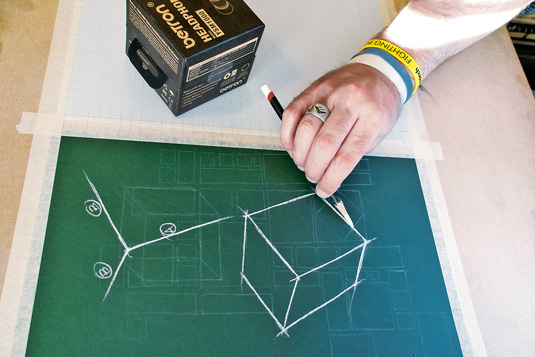
When yous first beginning drawing cubes, it helps to study with an object in front of y'all. The first line to go downwardly is the vertical line closest to you [A]. The next two lines are for the within edges [B]. These starting time at the top of our first stroke equally we're looking down at our cube and the pinnacle plane is visible.
The degree at which the inside edge lines are drawn depends on how much top aeroplane we can meet: if information technology's a lot, the lines are drawn at an acute bending, for less, a more birdbrained angle.
04. Finishing your cube
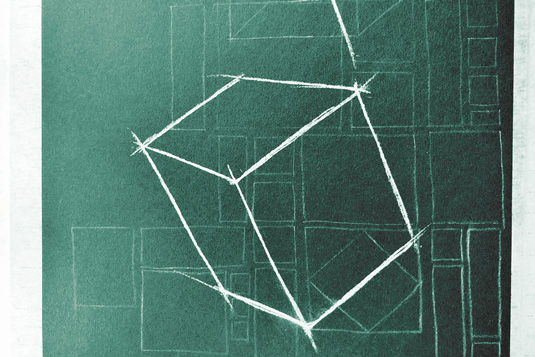
The length and bending of the inside edges depends on how much of the front and side is on show. If both are equal, the angle and length of the inside edge lines are also equal. Turn the front face more towards you and the line gets longer, the angle more horizontal. This turning creates the opposite; the line is more vertical, shorter. To terminate, go to the stop of each line and join the remaining edges with converging lines.
05. Try this cube exercise
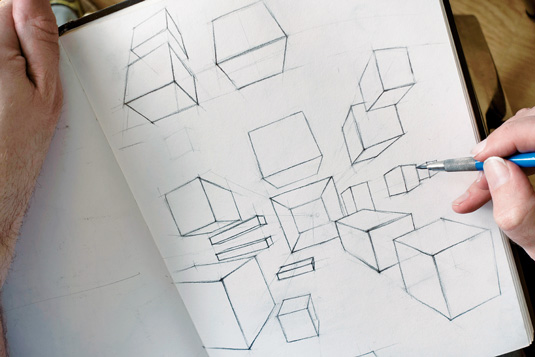
Depict a horizontal line across your surface, this will deed every bit your eye line or imaginary horizon line. Draw a square directly in the centre (notation no sides should be visible). Now, in a higher place the horizon line and off to the right, describe a cube as if you lot'd picked upward the centre square and moved information technology up and to the correct. Your goal is to populate the paper with 3D cubes as seen from various angles.
Next page:How to depict a sphere and more than shapes
Related articles
Source: https://www.creativebloq.com/illustration/how-draw-basic-shapes-31619534
0 Response to "Cool Shapes to Draw Easy"
Postar um comentário